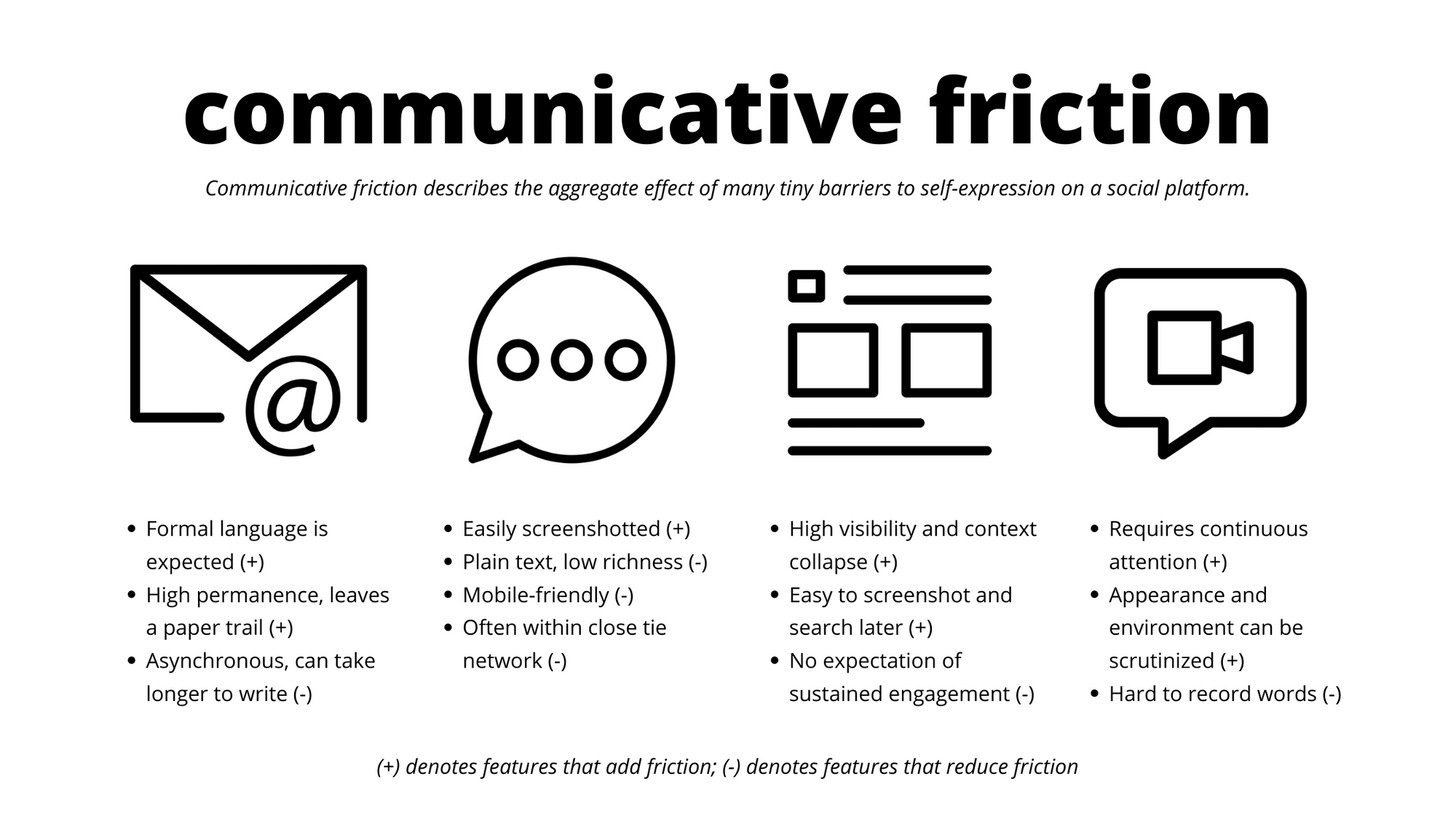Half-Baked Futures - Literature Notes
See Sources/Half-Baked Futures - Newsletter #literaturenotes
# All the world’s a stage + communicative friction
But our friends lists grew longer and further from the notion of friendship, a phenomenon that Internet scholar danah boyd dubbed ==“context collapse”.== We began to filter our words: Is this important enough to post? Will I start an argument? What will people think of me? Social media was not a casual hangout, we realized; it was something entirely different.
- According to sociologist Erving Goffman, life has a ==“front stage” and a “backstage”.==
In The Presentation of Self In Everyday Life, famed sociologist Erving Goffman conceptualized the ==“front stage” and “back stage” of social life.== If a primary Twitter profile is a public, ritualized performance on the “front stage”, an alt account is the “back stage,” where you’re free to slip off script and let out steam. The main difference is impression management: Are you in a setting where your reputation’s on the line?
- Using alternate accounts are like meditation; they help cleanse your mind.
If meditation challenges practitioners to acknowledge their thoughts and let them pass, then alt-tweeting is a ==cleansing ritual for the 21st-century mind.==
- Web 2.0 was meant to connect humanity in coversation, by empowering everyone to act on the world stage. However, social media’s reality is disconnected from this, due to all the signal and noise. Because of the desire for significance, we’ve forgotten our true needs: ==rest, closeness, and self-expression.==
- Related notes:
==The dream of Web 2.0 was to join all of humanity in conversation—empowering everyone to enact change on the world stage.== But increasingly, that ambition feels disconnected from social media’s reality. Crowdsourced advocacy and intellectual collaboration is accompanied by bells and whistles, takes and pretenses, and never-ending games of status and rhetoric and wit. In the tireless quest for significance (and those sweet, sweet engagement dollars), ==we’ve become distracted from our immediate needs: rest, closeness, self-expression.==
- Cards/Communicative friction describes ==the aggregate effect of many tiny barriers to self-expression on a social platform.==
- E.G. moment of hesitation before sending message, editing a post multiple times, activation energy for scheduling/joining a call
- Adding friction can make engagements more purposeful and thoughtful.
- It’s vital in designing vibrant social experiences. It shapes the who, what, when, where, and why of the platform.
- E.G. which behaviors should be effortless v.s. filtered

- E.G. which behaviors should be effortless v.s. filtered
Communiciative friction describes ==the aggregate effect of many tiny barriers to self-expression on a social platform.== For example, communicative friction is the ==moment of hesitation== before sending a message or the number of times a user edits a post before hitting “Submit.” For live video and voice chat, communicative friction appears before a person even opens an app — it’s the ==activation energy== required to schedule or join a call in the first place… Creating friction can lead to purposeful engagements rather than dispassionate ones, or thought-out messages instead of impulsive reactions. Therefore, designing ==vibrant social experiences== requires deciding when and how to add friction to the user journey: which behaviors should feel effortless, and which should be filtered. These decisions will shape the who, what, when, where, and why of your platform